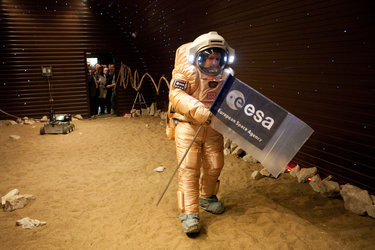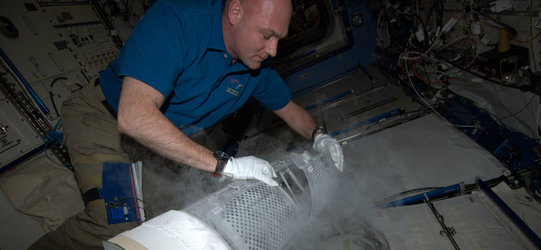Space fever
It started with a simple question that ended with a surprising answer and new technology that is being used in cutting-edge heart surgery and could save millions of euros in hospital bills.

Hanns-Christian Gunga, working at the Center for Space Medicine and Extreme Environments in Berlin, Germany, has spent a lifetime working on how humans adapt to extreme environments and he wanted to know: what happens to an astronaut’s body temperature in space?
People on Earth lose much of their body heat through convection – air around you is replaced by cooler air as it heats on the skin of your warm body and rises. Turning on a fan on a hot day can speed up the process and cool you down quicker as the air passes over and whisks some of the body heat away.
On the International Space Station there is no convection because of weightlessness and astronauts have reported feeling hot since the earliest days of spaceflight. ESA astronaut André Kuipers recounts: “Especially during exercise I would feel hot, afterwards I would always float to a fan to cool down.”
Thermolab
To understand what is happening you would need to continuously monitor astronaut’s body temperatures in space for a long period of time. The Thermolab experiment was born, but first a practical problem needed to be overcome.

Depending on where and when you measure your temperature a thermometer will give a different reading. Your body temperature is lower in your feet and lowest between four and six in the morning. Researchers and doctors refer to core body temperature – the temperature in your chest – to compare readings.
Measuring core body temperature is not straightforward because a thermometer must be placed as close to your heart for best results. Many types of thermometers exist, from the under-your-tongue to the stick-in-your-ear variety but unfortunately the most accurate way of reading a core temperature was to insert a thermometer into your rectum.
Aside from the discomfort, this method has many impracticalities: it is time-consuming and asking astronauts to stop their work to insert a thermometer was not considered an option.

Professor Gunga decided to use a new technique he had developed and tested on firefighters, measuring the difference in heat radiated from the forehead. A simple calculation then reveals core body temperature with great accuracy.
Eleven astronauts strapped with these sensors recorded their temperature over two sessions after three months in space and just before returning to Earth.
The sensor works so well that it is used in extreme environments by firefighters and in Antarctica, as well as during the Mars500 study.
A thermometer that can be read from a distance and continuously records very accurate data has enormous potential. The sensor is already being used in open-heart surgery on children but as a general instrument in hospitals it offers better and cheaper monitoring of patients.
Don’t forget the astronauts

The experiment shows that an astronaut's temperature rises by 1ºC during the first two months and stays there until it drops back to normal on return to Earth.
Comparing data to other studies shows a correlation with Interleukin-1, a hormone that causes fever when sick. Raising body temperature by a degree requires 20% more energy, derived from food, so mission planners need to know more about this phenomenon in order to estimate the required food supplies for long missions.
Professor Gunga explains the temperature sensor used in the Circadian Rhythms follow-up study











